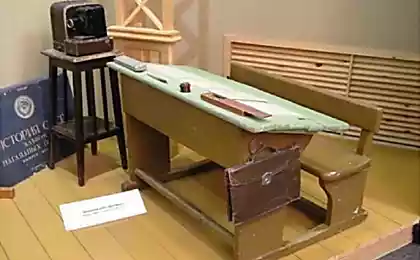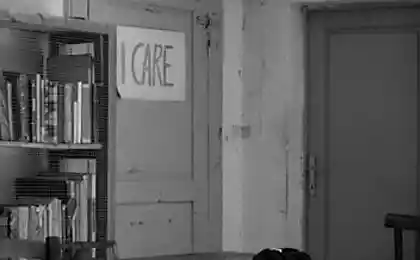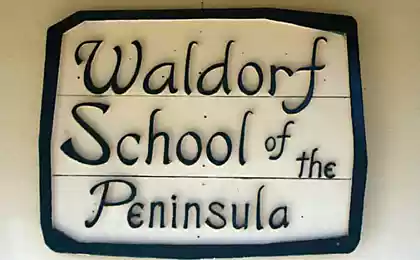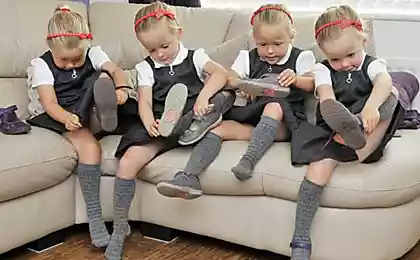184
When Korotkov’s desks were in schools, there were no “glasses” and slouchy schoolchildren.
The best classroom for a student – what is it? Everyone knows that the choice of the right furniture depends on posture, and therefore – the health of children. As you know, children are our bright future. Therefore, the ideal school desk must meet a number of requirements. Do not allow slouching and leaning back, give comfortable support to the forearms and do not increase the load on the eyes.

Oddly enough, but the best fit for this description is the desk of the Ural teacher Pyotr Feoktistovich Korotkov with more than a century of history. It is remembered with gratitude by our grandparents. It was simply impossible to spoil her posture and vision. So why did we abandon Korotkov’s ergonomic desk in favor of faceless chipboard and metal pipe products?
In 2020, a familiar school desk celebrated its 150th anniversary. It was invented in 1870 by the Swiss Friedrich Gouldreich, who adopted Orthodoxy under the name Fyodor Erismann. An ophthalmologist by training, he revealed the influence of school on the occurrence of myopia.
Who else was educated on such a desk? pic.twitter.com/35WbEZ4OFg
— Retro Force (@Power_Retro) August 2, 2020
Based on medical requirements, Erisman designed a desk with a backrest and an inclined countertop that goes behind the seat and prevents the student from arbitrarily changing his posture.
View this post on Instagram
Posted by Belyaeva Irina (@belirina_a)
The back of the desk supported the lower back, the stand gave emphasis to the legs, and the inclination of the countertop allowed reading only at right angles.

Such furniture was designed for one student, made of oak and was quite expensive. Therefore, only the gymnasium could afford it. And with the increase in the number of popular schools, the question of simplifying the design arose.
View this post on Instagram
Posted by Tolbino Online (@tolbinoonline)
A more affordable version of the desk for small schools was invented by a rural teacher Peter Korotkov. Korotkov’s desk has a hook for a briefcase, a recess for an inkwell, pencil grooves, a footrest and a comfortable folding lid that allows students to get up easier.
View this post on Instagram
Publication by Dmitry Alexandrov (@dmitriialeksandrovv)
For such desks, several generations of Soviet people were educated. And scoliosis and myopia among schoolchildren in those days was much less. The beneficial influence of the desk was noted in the documents of the Ministry of Health of the USSR. And GOST for the manufacture of school furniture provided for five sizes of desks for children of different ages.
In the mid-70s, the old desks began to disappear from schools, giving way to simple desks from chipboard with chairs attached to them. For a while, they could still be seen in junior grades. But cleaners complained that cleaning under desks is much more difficult than in classrooms with tables and chairs. Indeed, to properly clean under the desks, they even had to be put on the butt. In the end, ergonomics was sacrificed for simplicity and versatility.

Such a replacement made it possible to simplify production, but the joy of it did not last long. It soon became apparent that chairs could be moved and swung on their hind legs. And a straight countertop makes students bend and sit, bent by a worm. As a result, there are more schoolchildren wearing glasses and with a curvature of the spine every year, and economic feasibility confidently triumphs over the value of children's health. But maybe it's not that bad. And the best desk is still waiting for its time to return to school. Do you think we need a modern school?

Oddly enough, but the best fit for this description is the desk of the Ural teacher Pyotr Feoktistovich Korotkov with more than a century of history. It is remembered with gratitude by our grandparents. It was simply impossible to spoil her posture and vision. So why did we abandon Korotkov’s ergonomic desk in favor of faceless chipboard and metal pipe products?
In 2020, a familiar school desk celebrated its 150th anniversary. It was invented in 1870 by the Swiss Friedrich Gouldreich, who adopted Orthodoxy under the name Fyodor Erismann. An ophthalmologist by training, he revealed the influence of school on the occurrence of myopia.
Who else was educated on such a desk? pic.twitter.com/35WbEZ4OFg
— Retro Force (@Power_Retro) August 2, 2020
Based on medical requirements, Erisman designed a desk with a backrest and an inclined countertop that goes behind the seat and prevents the student from arbitrarily changing his posture.
View this post on Instagram
Posted by Belyaeva Irina (@belirina_a)
The back of the desk supported the lower back, the stand gave emphasis to the legs, and the inclination of the countertop allowed reading only at right angles.

Such furniture was designed for one student, made of oak and was quite expensive. Therefore, only the gymnasium could afford it. And with the increase in the number of popular schools, the question of simplifying the design arose.
View this post on Instagram
Posted by Tolbino Online (@tolbinoonline)
A more affordable version of the desk for small schools was invented by a rural teacher Peter Korotkov. Korotkov’s desk has a hook for a briefcase, a recess for an inkwell, pencil grooves, a footrest and a comfortable folding lid that allows students to get up easier.
View this post on Instagram
Publication by Dmitry Alexandrov (@dmitriialeksandrovv)
For such desks, several generations of Soviet people were educated. And scoliosis and myopia among schoolchildren in those days was much less. The beneficial influence of the desk was noted in the documents of the Ministry of Health of the USSR. And GOST for the manufacture of school furniture provided for five sizes of desks for children of different ages.
In the mid-70s, the old desks began to disappear from schools, giving way to simple desks from chipboard with chairs attached to them. For a while, they could still be seen in junior grades. But cleaners complained that cleaning under desks is much more difficult than in classrooms with tables and chairs. Indeed, to properly clean under the desks, they even had to be put on the butt. In the end, ergonomics was sacrificed for simplicity and versatility.

Such a replacement made it possible to simplify production, but the joy of it did not last long. It soon became apparent that chairs could be moved and swung on their hind legs. And a straight countertop makes students bend and sit, bent by a worm. As a result, there are more schoolchildren wearing glasses and with a curvature of the spine every year, and economic feasibility confidently triumphs over the value of children's health. But maybe it's not that bad. And the best desk is still waiting for its time to return to school. Do you think we need a modern school?
Removal of gel polish at home without harming the nail (How to remove gel polish at home)
When planting a shamanu bow, so that there were no arrows, the reception has never failed.























